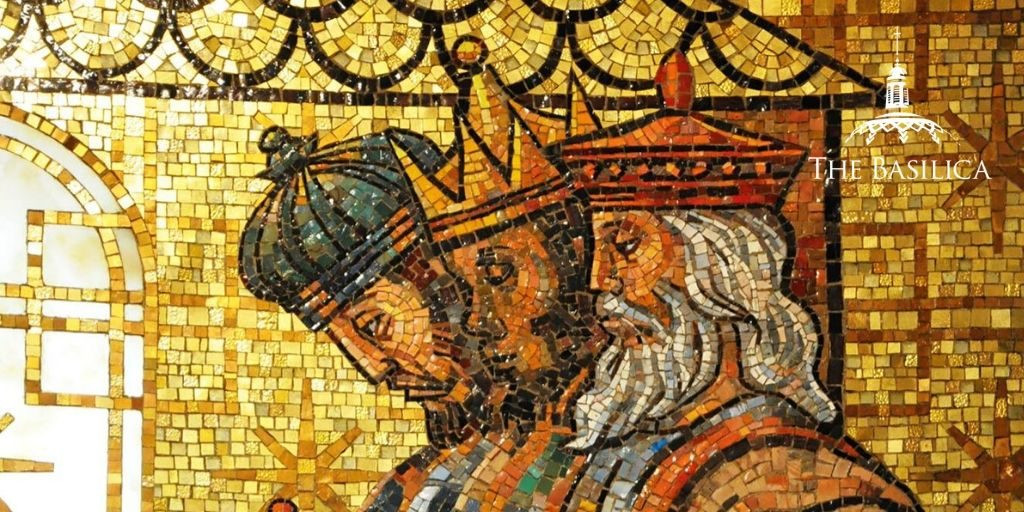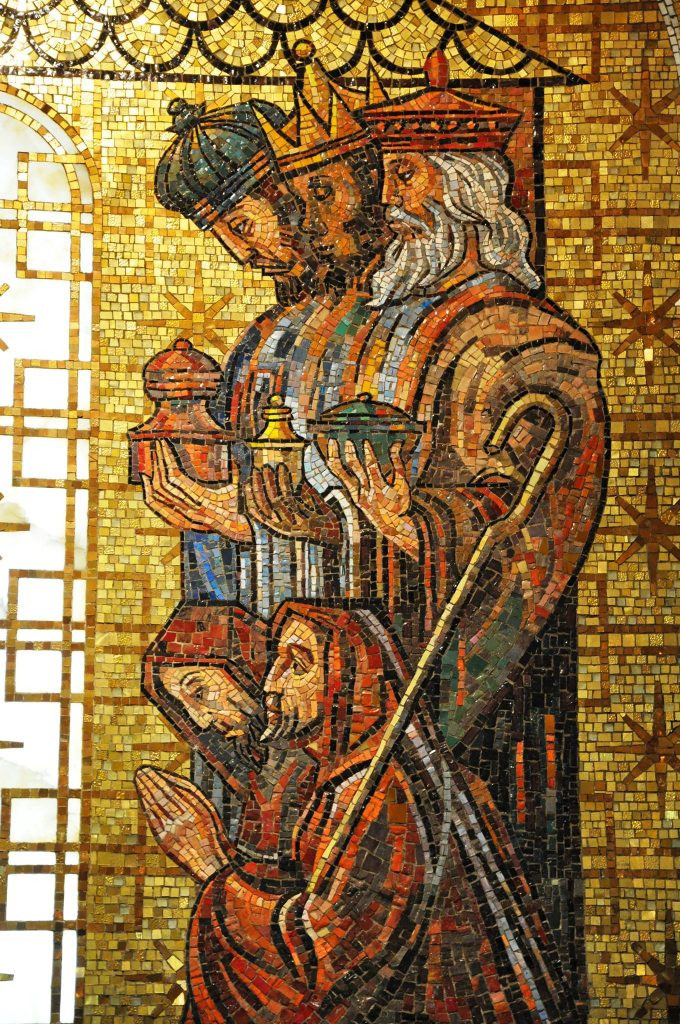The story of the Epiphany centers around the journey of the Magi, or Wise Men, who followed a star to worship the newborn Jesus. This event, celebrated in the Christian tradition, signifies the revelation of Jesus Christ to the Gentiles, highlighting his universal significance. The Magi, upon finding Jesus, presented him with three symbolic gifts: gold, frankincense, and myrrh. These Gifts Of The Magi were not mere tokens of appreciation; they were profound declarations about the identity and destiny of Christ.
 Exterior view of the Basilica of the National Shrine of the Immaculate Conception in autumn, showcasing its grand architecture.
Exterior view of the Basilica of the National Shrine of the Immaculate Conception in autumn, showcasing its grand architecture.
Biblical Account of the Magi’s Visit
The Gospel of Matthew provides the primary account of the Magi’s visit:
“When Jesus was born in Bethlehem of Judea, in the days of King Herod, behold, magi from the east arrived in Jerusalem, saying, “Where is the newborn king of the Jews? We saw his star at its rising and have come to do him homage.”… After their audience with the king they set out. And behold, the star that they had seen at its rising preceded them, until it came and stopped over the place where the child was. They were overjoyed at seeing the star, and on entering the house they saw the child with Mary his mother. They prostrated themselves and did him homage. Then they opened their treasures and offered him gifts of gold, frankincense, and myrrh. And having been warned in a dream not to return to Herod, they departed for their country by another way.” – Matthew 2:1-2, 9-12 (NABRE)
This passage reveals the Magi’s purpose: to worship the “newborn king of the Jews.” Their gifts, carefully chosen, were integral to this act of homage and carried deep symbolic weight.
Gold: A Gift Fit for a King
The first gift, gold, is universally recognized as a precious metal, long associated with royalty and kingship. Presenting gold to Jesus signified an acknowledgment of his kingly status. This was not simply earthly kingship, but a dominion that transcends earthly realms, as alluded to in the Book of Daniel:
“As I watched in the night visions, I saw one like a son of man coming, on the clouds of heaven; when he reached the Ancient One and was presented before him, He received dominion, glory, and kingship; nations and peoples of every language serve him. His dominion is an everlasting dominion that shall not be taken away; his kingship shall not be destroyed.” – Daniel 7:13-14 (NABRE)
The Magi, recognizing the signs, understood that Jesus was not just a king, but the King of Kings, deserving of the most precious offering.
 Depiction of the Three Wise Men presenting gifts of gold, frankincense, and myrrh to baby Jesus, symbolizing the gifts of the magi.
Depiction of the Three Wise Men presenting gifts of gold, frankincense, and myrrh to baby Jesus, symbolizing the gifts of the magi.
Frankincense: Honoring Jesus’ Divinity
Frankincense, the second gift, was a fragrant resin burned in temples as incense, particularly in Jewish Temple worship. It was a sacred offering to God, symbolizing prayer and adoration. By offering frankincense, the Magi were acknowledging Jesus’ divine nature. This gift affirmed their belief that Jesus was not merely a king, but also divine, God incarnate. The Apostle Paul later echoed this divine fullness in Christ:
“For in him dwells the whole fullness of the deity bodily, and you have come to fullness in him, who is the head of every principality and power.” – Colossians 2:9-10 (NABRE)
The inclusion of frankincense among the gifts of the magi underscores the theological truth of Jesus’ deity from the very beginning of his earthly life.
Myrrh: Foreshadowing Jesus’ Sacrifice
Myrrh, the final gift, was a fragrant resin commonly used for embalming and burial in ancient times. It might seem like an unusual gift for a newborn, but myrrh carried a profound prophetic significance. It foreshadowed Jesus’ future suffering and death. The Gospel of John recounts the use of myrrh at Jesus’ burial:
“Nicodemus, who had first come to him at night, also came bringing a mixture of myrrh and aloes weighing about one hundred pounds. They took the body of Jesus and bound it with burial cloths along with the spices, according to the Jewish burial custom.” – John 19:39-40 (NABRE)
The gift of myrrh, therefore, was a poignant reminder of Jesus’ destined path of sacrifice, highlighting that his kingship and divinity would be realized through suffering and death for the salvation of humanity.
The Enduring Significance of the Magi’s Gifts
The gifts of the magi – gold, frankincense, and myrrh – are rich in symbolism, revealing the multifaceted identity of Jesus Christ. They proclaimed him as king, divine, and destined for sacrificial love. These gifts were not just for Jesus then, but continue to speak to us today. They invite us to recognize Jesus in his fullness and to offer him our own gifts of worship and devotion. Just as the Magi followed the star and presented their treasures, we too are called to seek Christ, acknowledge his true identity, and offer him homage in our lives. As Pope Francis has encouraged, we are called to imitate the Magi in our own journey of faith, setting out to encounter Jesus and placing him at the center of our lives.

